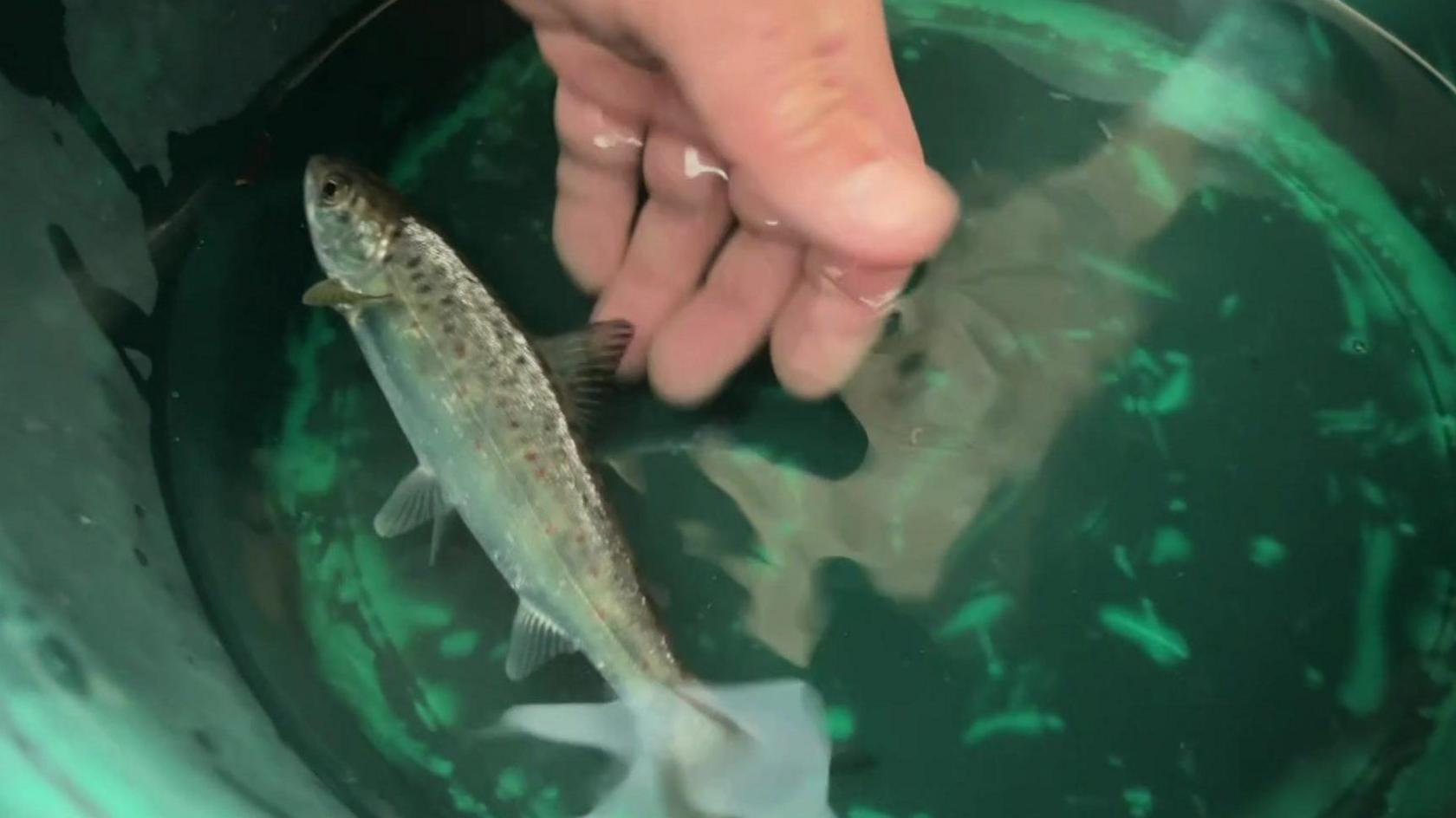River's salmon numbers at record low

Juvenile salmon were tagged before they headed out to sea
- Published
Numbers of salmon in a river have fallen to their lowest in 40 years, conservationists have said.
The Game and Wildlife Conservation Trust (GWCT) tagged and weighed about 10,000 salmon in the River Frome in Dorset last year, before tagging juveniles as they migrate out to sea.
Each year researchers aim to catch and tag about 10,000 but this year's survey managed less than 4,000.
The trust said it showed the "continued steep decline" of salmon in rivers.
Salmon were caught and tagged on a 35-mile (56km) stretch of the River Frome
Researchers have been tagging and surveying salmon in the Frome since 2005.
The team catch and tag the juveniles which are are living and growing in the river each autumn.
The individual salmon are recorded by tag readers and fish traps in the river, as they migrate out to sea the following spring as year-old fish known as smolts.
When the survivors return to the river after having spent a year or two feeding in the North Atlantic, they are again recorded as they pass the readers in the river.
The trust's records show in the 1970s and 80s, about 15-20% of the salmon that went to sea would return as adults but that figure was now just 4-5%.
In 2023, an estimated 443 salmon returned to the river to spawn, compared to up to 4,000 a year in the 1980s
Senior research assistant Will Beaumont said 2024's results had been "the worst we’ve ever had".
“We have failed to hit 10,000 parr [juveniles] in the past on several occasions but usually it’s not this far off," he continued.
The salmon are recorded by tag readers and fish traps in the river as they migrate out to sea each spring
The previous record low of 4,988 in 2016 was attributed to rivers being too warm in winter and too low in spring.
The trust said a number of factors were thought to be behind the decline of wild Atlantic salmon including run-off from agricultural land and climate change causing warming seas and rivers.
Dylan Roberts, GWCT’s head of fisheries, said: “We know that excessive sediment in rivers caused by run-off from agricultural land reduces the survival of salmon and trout eggs and the Frome has a lot of sediment in the gravel."
He highlighted the effect nutrients from sewage treatment discharge and septic tanks can have on river water.
"This causes excessive growth of algae which suffocates the riverbed, shades and reduces the growth of plants, like water crowfoot, that provide crucial habitats for juvenile salmon and the insects they feed on," he continued.
Wild Atlantic salmon facts
The third largest species of salmon, growing up to one metre in length
Hatch in freshwater streams and rivers and move out to sea as they grow where they mature and return to their native river a year or two later (sometimes longer) to spawn
The natural breeding grounds of Atlantic salmon are rivers in Europe and the north-eastern coast of North America
In Europe, Atlantic salmon are still found as far south as Spain, and as far north as Russia
Source: GWCT
You can follow BBC Dorset on Facebook, external, X (Twitter), external, or Instagram, external.
Get in touch
Do you have a story BBC Dorset should cover?
Related topics
More from the BBC
- Published2 May
- Published30 September 2023